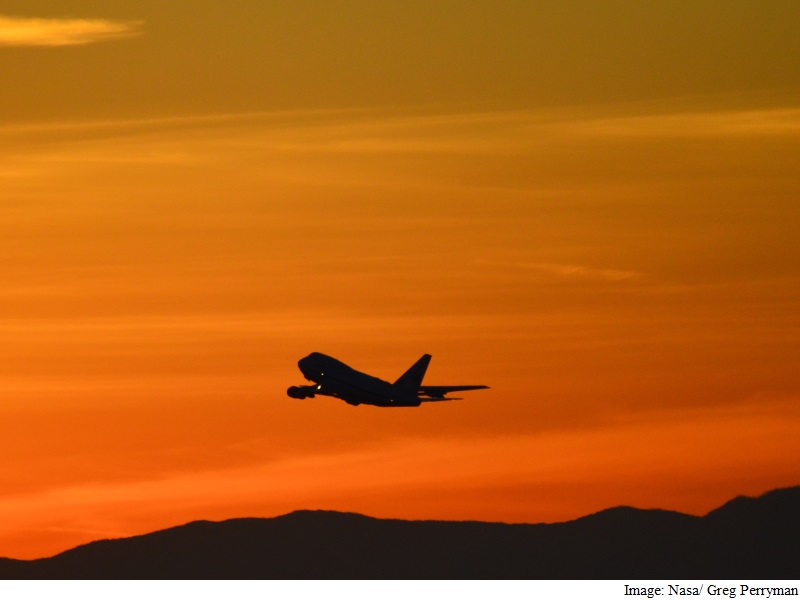- Home
- Science
- Science News
- Nasa's Sofia Flying Telescope Begins Study of Asteroids, Stars
Nasa's Sofia Flying Telescope Begins Study of Asteroids, Stars

This operational period, known as "Cycle 4", is a one-year-long observing period in which the Stratospheric Observatory for Infrared Astronomy (SOFIA) is scheduled for 106 flights between now and the end of January 2017.
"The Cycle 4 programme will make more than 550 hours of observations," said Pamela Marcum, Nasa's SOFIA project scientist in a statement.
"We'll be studying objects including planets, moons, asteroids and comets in our solar system; star and planet formation; extrasolar planets and the evolution of planetary systems; the interstellar medium and interstellar chemistry; and nearby normal and active galaxies," Marcum explained.
SOFIA's instruments observe infrared energy - one part of the electromagnetic spectrum which includes visible light, x-rays, radio waves and others.
Many objects in space, for example newborn stars, emit almost all their energy at infrared wavelengths and are undetectable when observed in ordinary visible light.
In other cases, clouds of gas and dust in space block visible light objects but allow infrared energy to reach Earth.
In both situations, the celestial objects of interest can only be studied using infrared facilities like SOFIA.
"During the February third flight, the target objects ranged from a young planetary system around the naked-eye star Vega, only 25 light years from us, to an infant star 1,500 light years away in the Orion star forming region," noted Erick Young, SOFIA's science mission operations director.
"We also observed a supermassive black hole hidden behind dense dust clouds in the center of a galaxy 170 million light years away," he added.
Later in "Cycle 4", the SOFIA observatory is scheduled to deploy to the Southern Hemisphere for seven weeks in June and July 2016, with 24 science flights planned from a base at Christchurch, New Zealand.
There, scientists will have the opportunity to observe areas of interest such as the Galactic Center and other parts of the Milky Way that are not visible or difficult to observe from the Northern Hemisphere.
SOFIA is a joint project of Nasa and the German Aerospace Center (DLR). Nasa's Ames Research Center in Moffett Field, California, manages the SOFIA programme.
Catch the latest from the Consumer Electronics Show on Gadgets 360, at our CES 2026 hub.
Related Stories
- Samsung Galaxy Unpacked 2025
- ChatGPT
- Redmi Note 14 Pro+
- iPhone 16
- Apple Vision Pro
- Oneplus 12
- OnePlus Nord CE 3 Lite 5G
- iPhone 13
- Xiaomi 14 Pro
- Oppo Find N3
- Tecno Spark Go (2023)
- Realme V30
- Best Phones Under 25000
- Samsung Galaxy S24 Series
- Cryptocurrency
- iQoo 12
- Samsung Galaxy S24 Ultra
- Giottus
- Samsung Galaxy Z Flip 5
- Apple 'Scary Fast'
- Housefull 5
- GoPro Hero 12 Black Review
- Invincible Season 2
- JioGlass
- HD Ready TV
- Laptop Under 50000
- Smartwatch Under 10000
- Latest Mobile Phones
- Compare Phones
- OPPO Reno 15 Pro Max
- Honor Win RT
- Honor Win
- Xiaomi 17 Ultra Leica Edition
- Xiaomi 17 Ultra
- Huawei Nova 15
- Huawei Nova 15 Pro
- Huawei Nova 15 Ultra
- Asus ProArt P16
- MacBook Pro 14-inch (M5, 2025)
- OPPO Pad Air 5
- Huawei MatePad 11.5 (2026)
- Xiaomi Watch 5
- Huawei Watch 10th Anniversary Edition
- Acerpure Nitro Z Series 100-inch QLED TV
- Samsung 43 Inch LED Ultra HD (4K) Smart TV (UA43UE81AFULXL)
- Asus ROG Ally
- Nintendo Switch Lite
- Haier 1.6 Ton 5 Star Inverter Split AC (HSU19G-MZAID5BN-INV)
- Haier 1.6 Ton 5 Star Inverter Split AC (HSU19G-MZAIM5BN-INV)

















